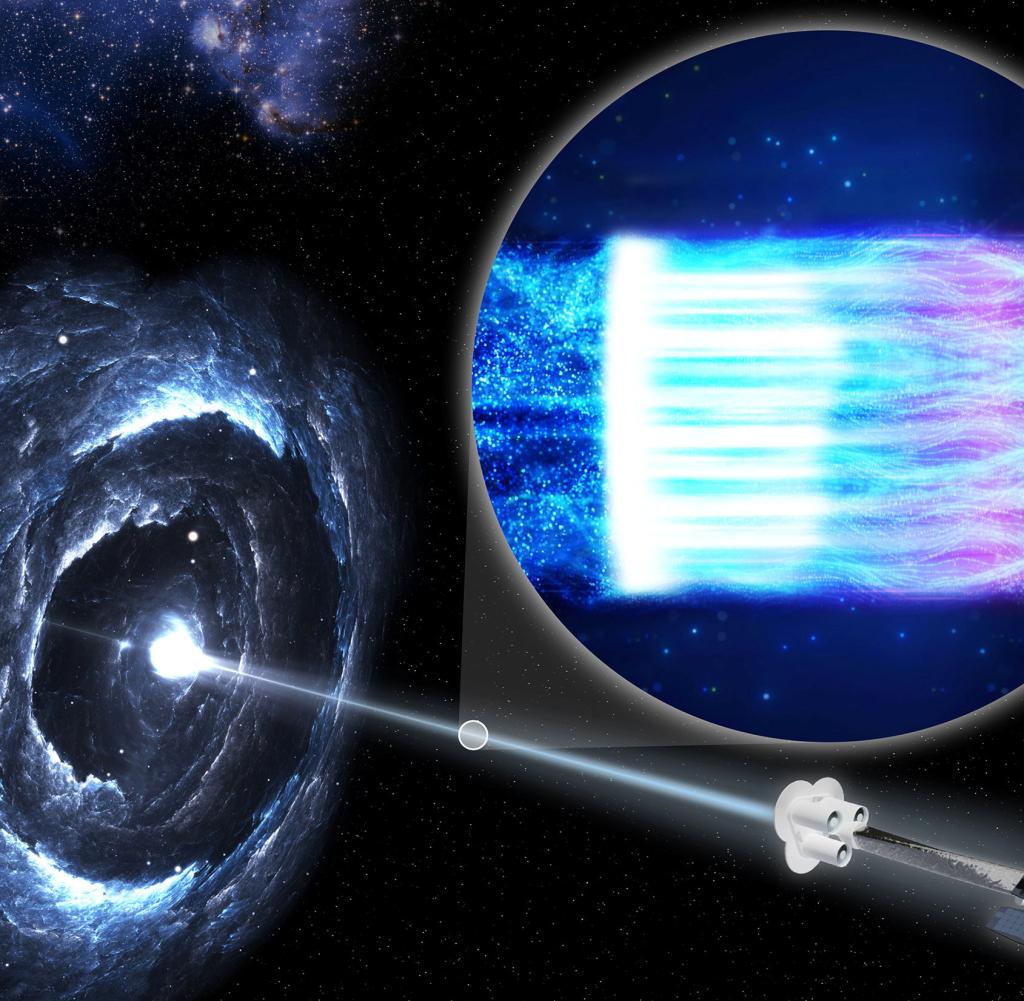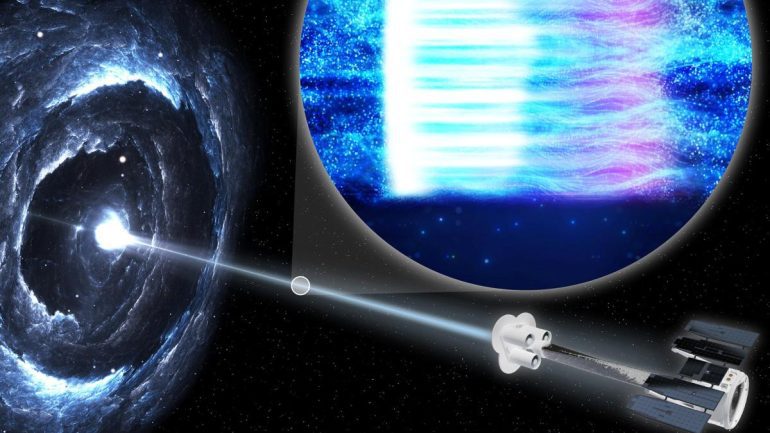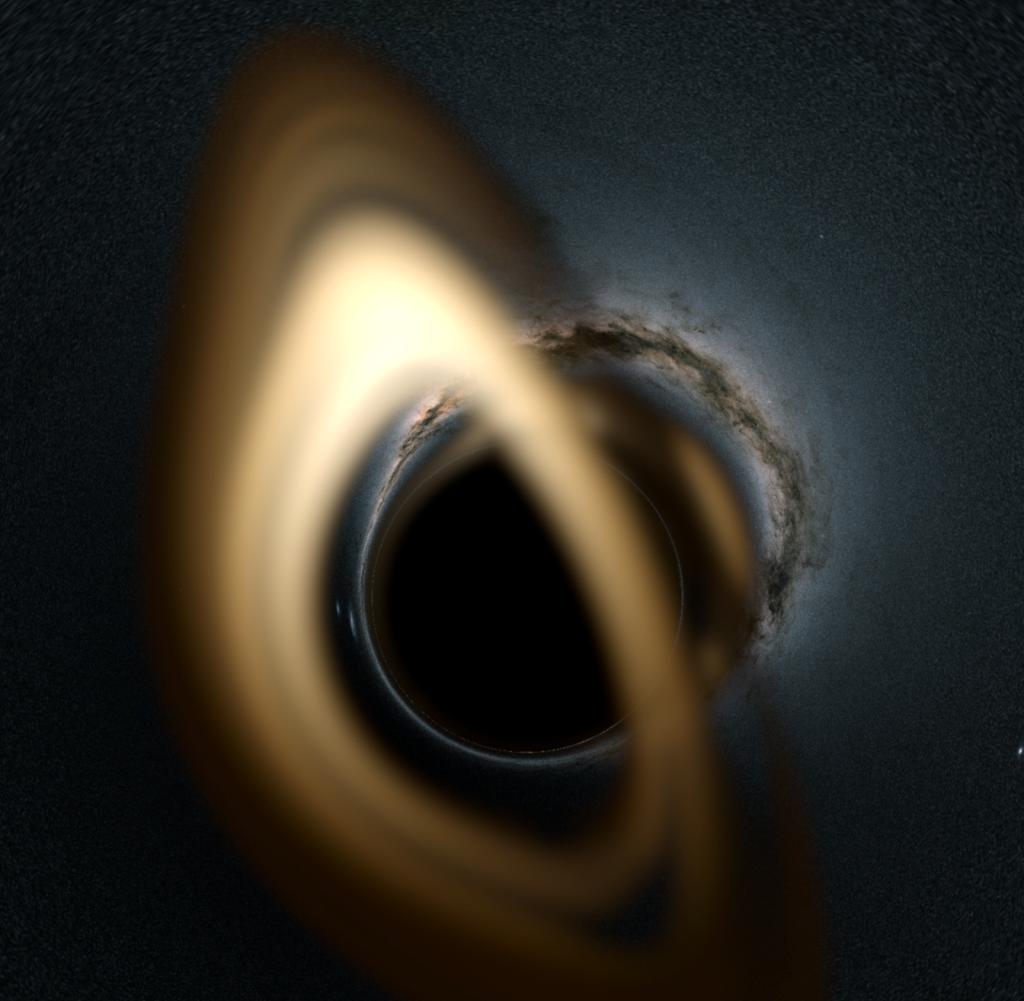The strong pressure wave on the black hole accelerates the particles


Illustration of the IXPE Space Telescope (r.) and the blazar “Markarian 501” (l.)
Source: Pablo Garcia (NASA/MSFC)
Astronomers have long known that the radiation from blazars comes from high-energy, electrically charged particles – it was just not clear how these particles are accelerated to their high energies. Now the X-ray vision of the telescope IXPE brings glow in the dark.
MSupermassive black holes in distant galaxies shine unusually brightly. With the help of the new X-ray telescope IXPE, an international team of researchers has now discovered why for one of these celestial objects: a strong pressure wave around black holes accelerates electrons to extremely high energies – which These particles shape electromagnetic radiation from radio waves to optical light to X-rays and gamma rays. According to the scientists in the journal “Nature”, it is now necessary to investigate whether this mechanism is the cause in all such objects.
Almost all galaxies have a black hole at their center that is millions or even billions of times the mass of the Sun. Most of these massive objects behave quietly, they do not emit any radiation. But some are active: gas from the environment falls into the black hole and lights up in the process. Due to the black hole’s often strong magnetic field, part of the falling matter is deflected and shot far into space in the form of bundled beams of matter at the black hole’s poles – known as jets.
If such a jet is pointed almost precisely at Earth, the active black hole lights up especially brightly as a “blazar” when viewed from here. Astronomers have long known that the radiation from blazars is caused by high-energy, electrically charged particles – it was not clear until now how these particles are accelerated to their high energies. To find the cause, scientists have to determine the radiation’s polarization – that is, whether or not electromagnetic waves oscillate in a preferred direction.
“Until now, such measurements were only possible in the radio and optical ranges,” explain Ioannis Liodakis from the University of Turku in Finland and his colleagues. “But we use it only to detect particles that have already left the acceleration threshold many days or years ago. The origin of the acceleration can only be seen with the help of X-ray measurements.
That has changed with the X-ray Space Telescope IXPE – Imaging X-ray Polarimetry Explorer – launched on December 9, 2021 by the Italian space agency Assi and NASA. Measurement of the polarization of X-rays in blazar jets is now possible for the first time. In March 2022, Liodakis and his colleagues target IXPE at the blazar Markarian 501, 500 million light-years away. The results of these observations are a “decisive breakthrough in the study of blazars”, commented non-participating astronomer Lee Marcotulli of Yale University in “Nature” in the United States.
Because measurements by Liodakis’ team show a significant polarization of the X-ray radiation. “This points to a shock wave as the cause of the particles’ acceleration,” say the scientists. Researchers call a shock wave a particularly strong pressure wave that propagates faster than sound. This shock wave is created when the matter bundled up by the black hole in the jet encounters slow-moving gas in the surrounding region accelerating it to the speed of light.
At least with the blazar Markarian 501 it is clear that the shock wave acts as a cosmic particle accelerator. The question remains whether this is the case for all blazars – or whether there are different blazars with different mechanisms for accelerating the particles. With IXPE, however, astronomers now have a tool to use X-ray vision to probe the acceleration of many other blazars and thus to find the answer to this question.
“Aha! Ten Minutes of Daily Wisdom” is WELT’s wisdom podcast. Every Tuesday and Thursday we answer daily questions from the field of science. subscribe to the podcast on Spotify, apple podcast, deezer, amazon music Or directly via RSS feed.

Internet fan. Alcohol expert. Beer ninja. Organizer. Certified tv specialist. Explorer. Social media nerd.






![New information (eggs, nests, genes [...]) Revealed from Monster Hunter Stories 2 • Nintendo Connect](https://www.canewsottawa.ca/wp-content/uploads/2021/05/New-information-eggs-nests-genes-Revealed-from-Monster-Hunter-270x180.jpg)


